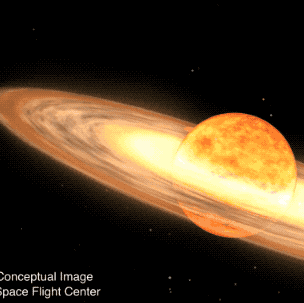Clean and sustainable nuclear energy may sound like a washed up, post-war dream, but the modern reality of this power source is much more complicated. For one, nuclear energy in the coming decades will include not only nuclear fission—the type of reaction already driving nuclear power plants—but also the much more elusive nuclear fusion.
If scientists can solve the remaining puzzle pieces behind these technologies, both nuclear fission and fusion are poised to have a big impact on the world’s energy reserves and green energy efforts in the coming decades. But before they do, let’s set the record straight on how these two similar sounding energy sources truly differ.
Nuclear Fission
When you’re thinking about nuclear power, odds are you’re probably picturing a process called nuclear fission. To create nuclear fission, atoms of radioactive elements like Uranium are broken apart with neutrons to release an enormous amount of energy. Inside nuclear reactors, this energy is used to create steam, which in turn powers a turbine to produce electricity.
While nuclear fission may be less damaging to the environment than burning oil or coal, this energy source has faced its own crises in the form of pollution from radioactive waste and deadly meltdowns of aging power plants like Chernobyl and Fukushima. As a result, public opinion on nuclear energy in the U.S. remains lukewarm even today, according to a 2022 Pew Research Survey.
However, it may be too soon to count nuclear fission out quite yet. In recent years there have been advances in both materials (e.g. molten salt instead of water coolant) and machine learning software incorporated into these plants that make them safer than their predecessors. Additionally, dedicating large complexes to nuclear power plants may become less popular as small modular reactors (SMRs) and microreactors come on the scene.
Ranging between the size of a shipping container and a jet engine, these smaller scale reactors are designed to be more nimble than traditional nuclear power plants. For this reason it may be easier in the future to run an SMR in a remote community to create sustainable power or to power a spacecraft using a microreactor. Companies like NuScale, TerraPower and X-Energy are already hard at work to bring these possibilities to life.
Nuclear Fusion
Unlike its sibling, nuclear fusion has largely been restricted to the realm of science fiction until recently. Instead of breaking something apart, nuclear fusion happens when light atoms are smashed together to create a heavier atom (e.g. two hydrogen atoms combining to form one helium atom). This interaction creates a huge burst of energy that is still burning at the heart of stars all across the universe.
Unlike fission, nuclear fusion also has the added benefit of being self-sustaining without creating harmful waste. However, achieving and controlling fusion has been a lot more difficult for scientists to crack than fission.
One problem facing fusion technology is that in order to create self-sustaining power (a point called “fusion ignition”) it needs to be sparked by a massive amount of energy. In theory, after this initial power push the fusion reactor should then be able to create and sustain even more power than was initially fed into it. However, actually achieving this is easier said than done.
That said, labs like the U.S.’s National Ignition Facility (NIF) and France’s International Thermonuclear Experimental Reactor (ITER) have made progress in recent years with NIF reporting last summer that their reactor was able to generate up to 70 percent of its input energy. Start-ups like Helion Energy are also working toward this goal using magnetic coils to compression the reactor core.
Scientists have claimed to be on the brink of cracking nuclear fusion for decades, but hopefully with any luck that promise may finally be coming true.

Sarah is a science and technology journalist based in Boston interested in how innovation and research intersect with our daily lives. She has written for a number of national publications and covers innovation news at Inverse.













